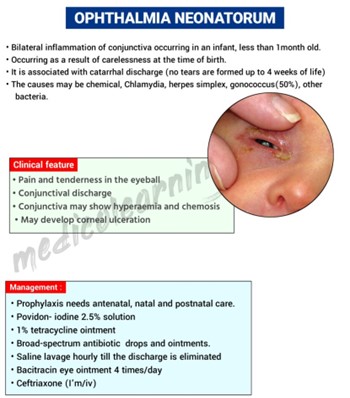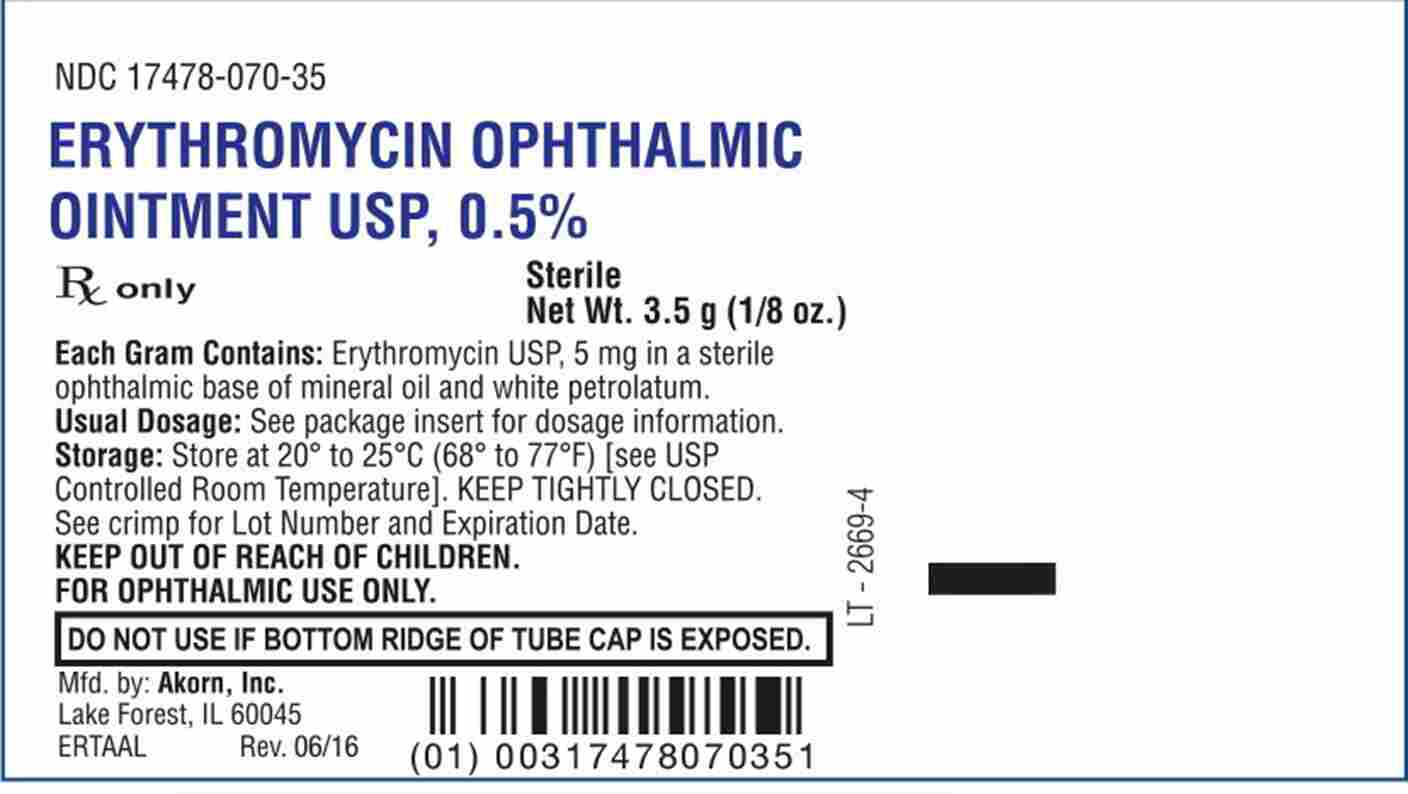Immediate Newborn Care > Maternal & Newborn
Exam Review
Erythromycin Eye Ointment
Total Questions : 5
Showing 5 questions, Sign in for moreA nurse is preparing to administer erythromycin eye ointment to a newborn.
What is the purpose of this intervention?
Explanation
The correct answer is choice B. To prevent ophthalmia neonatorum, a serious eye infection caused by gonorrhea or chlamydia.Erythromycin eye ointment is an antibiotic that kills bacteria and is used to prevent neonatal conjunctivitis, which can lead to blindness if untreated.Erythromycin is the only approved agent available in the United States for prevention of ophthalmia neonatorum.
Choice A is wrong because erythromycin eye ointment does not prevent dryness and irritation of the eyes.It is used to treat bacterial eye infections like bacterial conjunctivitis, bacterial keratitis, blepharitis and infectious uveitis.
Choice C is wrong because erythromycin eye ointment does not prevent retinopathy of prematurity, a condition that can lead to blindness in premature infants.Retinopathy of prematurity is caused by abnormal growth of blood vessels in the retina and is not related to bacterial infection.
Choice D is wrong because erythromycin eye ointment does not prevent conjunctivitis, a common eye infection in newborns.
Conjunctivitis can be caused by viruses, fungi, parasites or allergens, which erythromycin cannot treat.Erythromycin only prevents conjunctivitis caused by gonorrhea or chlamydia.

A nurse is checking the medication label of erythromycin eye ointment before applying it to a newborn’s eyes.
What information should the nurse verify on the label? (Select all that apply)
Explanation
The correct answer is choice A, B and C. The nurse should verify the name, dose and expiry date of the medication on the label before applying it to a newborn’s eyes.
This is to ensure that the medication is appropriate, safe and effective for the intended purpose.
Choice D is wrong because the route of administration of the medication is already known.Erythromycin eye ointment is applied to the lower eyelids of the newborn’s eyes.
Choice E is wrong because the frequency of administration of the medication is also already known.Erythromycin eye ointment is usually applied once soon after birth.

Erythromycin eye ointment is used for the prevention of neonatal conjunctivitis, which is an eye infection caused by bacteria that can enter the baby’s eyes during childbirth.It can cause serious complications such as blindness if left untreated.
A nurse is applying erythromycin eye ointment to a newborn’s eyes.
How much ointment should the nurse squeeze into the lower conjunctival sac of each eye?
Explanation
The correct answer is choice B. 0.5 cm.According to the PEDIATRIC NEWBORN MEDICINE CLINICAL PRACTICE GUIDELINES, a thin strip of erythromycin eye ointment should be applied to the lower conjunctival sac of each eye of the newborn within 24 hours after birth.
The length of the strip should be approximately 0.5 cm (or 1/4 inch).This is done to prevent neonatal conjunctivitis, also known as ophthalmia neonatorum, which is a serious eye infection caused by bacteria such as Neisseria gonorrhoeae.
Choice A is wrong because 0.25 cm is too short and may not provide adequate coverage of the eye.
Choice C is wrong because 1 cm is too long and may cause excessive ointment to spill out of the eye.
Choice D is wrong because 2 cm is way too long and may cause irritation and discomfort to the eye.
The normal range for erythromycin eye ointment application is 0.5 cm to 1 cm, but the recommended dose is 0.5 cm.
A nurse is applying erythromycin eye ointment to a newborn’s eyes.
What should the nurse do after applying the ointment?
Explanation
The correct answer is choice B. Do not rub or wipe the eyes after applying the ointment.This is because rubbing or wiping the eyes can cause irritation and remove the ointment from the conjunctival sac, where it is supposed to act against bacterial infections.
Choice A is wrong because rubbing or wiping the eyes gently does not spread the ointment evenly and can cause harm to the newborn’s eyes.
Choice C is wrong because rinsing the eyes with sterile saline solution can wash away the ointment and reduce its effectiveness.
Choice D is wrong because covering the eyes with sterile gauze pads can interfere with eye-to-eye contact between the newborn and parents, which is important for bonding and attachment.
A nurse is teaching a new mother about erythromycin eye ointment for her newborn.
What should the nurse include in the teaching? (Select all that apply)
Explanation
The correct answer is choice A and E.The ointment should be administered within 1-2 hours of birth to be effective and may cause minor ocular irritation or redness that lasts for 24-48 hours.
Choice B is wrong because the ointment does not affect the newborn’s ability to see.The ointment may cause temporary blurred vision, but this does not impair the newborn’s vision development.
Choice C is wrong because the ointment does not increase the risk of bleeding if the newborn is also given vitamin K injection.Vitamin K injection is given to prevent bleeding disorders in newborns and has no interaction with erythromycin ointment.
Choice D is wrong because the ointment is not required by law in all states of the United States to prevent eye infections in newborns.
Some states have laws that mandate the use of erythromycin ointment for newborns, but others do not.However, it is recommended by the American Academy of Pediatrics and the Centers for Disease Control and Prevention as a standard of care.
Sign Up or Login to view all the 5 Questions on this Exam
Join over 100,000+ nursing students using Nursingprepexams’s science-backend flashcards, practice tests and expert solutions to improve their grades and reach their goals.
Sign Up Now

